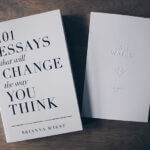8 Helpful Tips that Make Academic Writing a Cinch
Academic writing – the very words send a shiver up the spines of every student within a 100-mile radius. Many would rather read legal briefs or meeting minutes than sludge through a research paper, but we’ve got 8 Helpful Tips that Make Academic Writing a Cinch. Follow these steps, and you could find that your next formal writing project can be your best yet.
 1. Knowing Your Audience
1. Knowing Your Audience
In academic writing, one must be mindful of the audience’s education level. Planning to write one’s piece using the same language choices one would make in a casual conversation, email to a friend, or chat conversation with an Internet pal is a bad idea. No LOLs, ROFLs, or WTFs, in other words. Academic writing also tends to be about research, so one should pretend that they’re presenting information to a group of people rather than sharing an intimate reveal with one or two persons. Provided the instructor is not the only person who’ll be reading the work, it’s important for one to write with a firm grasp of the subject matter in all its intricacy, and to bring an air of authority to the topic at-hand.
2. Reading Books
Many student writers do everything they can to avoid this part of the writing process, not even realizing that it is a part of the writing process (and a very important one at that!) Every writer who has ever written professionally will say the same thing: “To be a great writer, you must be a great reader.” The only way to learn the rules and constructs of written communication are to see examples in action.
In this case, that does not mean the latest J.K. Rowling or Stephanie Meyer book. While breezy summer literature is a good recreational activity, it teaches little about what constitutes great academic writing. What are some great examples of academic writing available in bookstores? “True crime” books are prime examples of how it’s possible to present academic writing in a compelling way.
3. Summarizing
Summarizing is a simple concept that students learn very early in the educational process. As textual complexity increases, the importance of summarization grows exponentially. Being able to condense the main ideas of research materials and formulate them in one’s own words forms the cornerstone for great academic writing, helping the writer to internalize the materials, form theories, and draw conclusions.
4. Timed Writing
An often overlooked tool in sharpening one’s formal writing capabilities is to engage in timed writing practices regarding the research materials. Many students are intimidated by writing out their thoughts, especially when it comes to the academic writing assignment, because they get hung up on the grammar and usage. Timed writing helps overcome this fear in a number of ways. It creates a “rush” in the participant’s mind via the ticking clock and the need to get something out in the time allotted.
Generally, 15 minutes are recommended for timed writing. During that time period, the participant should abide by two main rules: a minimum word count and a restriction to only the topic. Within that topic, the writer can rehash and summarize information from the research materials, share his own personal opinions on the topic, and essentially “write like no one is watching.” The goal is not to produce usable words for the finished piece, though it’s certainly a good thing if the writer succeeds in doing so. The goal instead is for the writer to focus on the topic and flex his word-muscles. He’ll need to do both before the end of the project.
5. Understanding of Reading Levels
There are a number of reading levels by which all writing can be judged, and no, one d
oes not have to “know” them all by heart in order to be a great academic writer. But it helps to understand the gist of what formulas, such as Flesch-Kincaid, Dale-Chall, Gunning Fog, and the Fry Readability Graph, all stand for.
Flesch-Kincaid is the most commonly used in the academic community for how it easily assigns a “grade level” to the selected text. If one is writing at an eighth grade level in middle school, for example, that’s an indication that the material is reaching the audience for which it is intended. The reading level of the average American usually doesn’t move past grade ten, and that’s not necessarily a bad thing considering the importance of communication. Still, if one’s masters thesis is written on a seventh grade level, something could be wrong.
6. Using Programs that Gauge Reading Levels
Once an understanding has been developed for the different reading levels, it is important to familiarize oneself with programs that automatically scan text and score material without the writer having to do so manually. One tool that can provide readings across multiple formulas within seconds is the editing tool at AutoCrit.com, available through the website via annual subscription. This program is a huge time-saver for academic writers, not just in analyzing text, but also in advanced editing functions, such as overused language, sentence length, and multi-syllable words.

There are too many rules of grammar to give an overview for each one here. Bottom line: before you unleash your work on the public, check to make sure all words are spelled correctly and used correctly, and make sure that the point of view is formal, not conversational. (Hint: most academic writing adopts the third-person perspective, or “he said” as opposed to “I said” or “you said.”)
8. Passion or Interest in the Content Area
Particularly in school, finding a content area for an academic paper that will kindle the writer’s passion can be difficult, but not impossible. Using “A Wilderness of Error,” the latest Errol Morris book, as an example, one cannot help but be captured and enthralled by the riveting presentation that revisits a bizarre and brutal multiple homicide with the thesis that the Justice System failed and convicted the wrong man. Morris’ work is both literary and meticulously researched. Academic writing at its finest that doesn’t just make the grade; it changes perceptions. All because Morris was driven by his passion for righting past wrongs.
Should Morris succeed in getting the previous conviction overturned, the subject of his book would be the second man wrongly convicted of murder set free by his work. The first, a suspect in the shooting of a Dallas police officer, received a new hearing and was exonerated after Morris’ documentary “The Thin Blue Line” was released in 1988, once again making the case and proving that police arrested the wrong man.

 1. Knowing Your Audience
1. Knowing Your Audience






